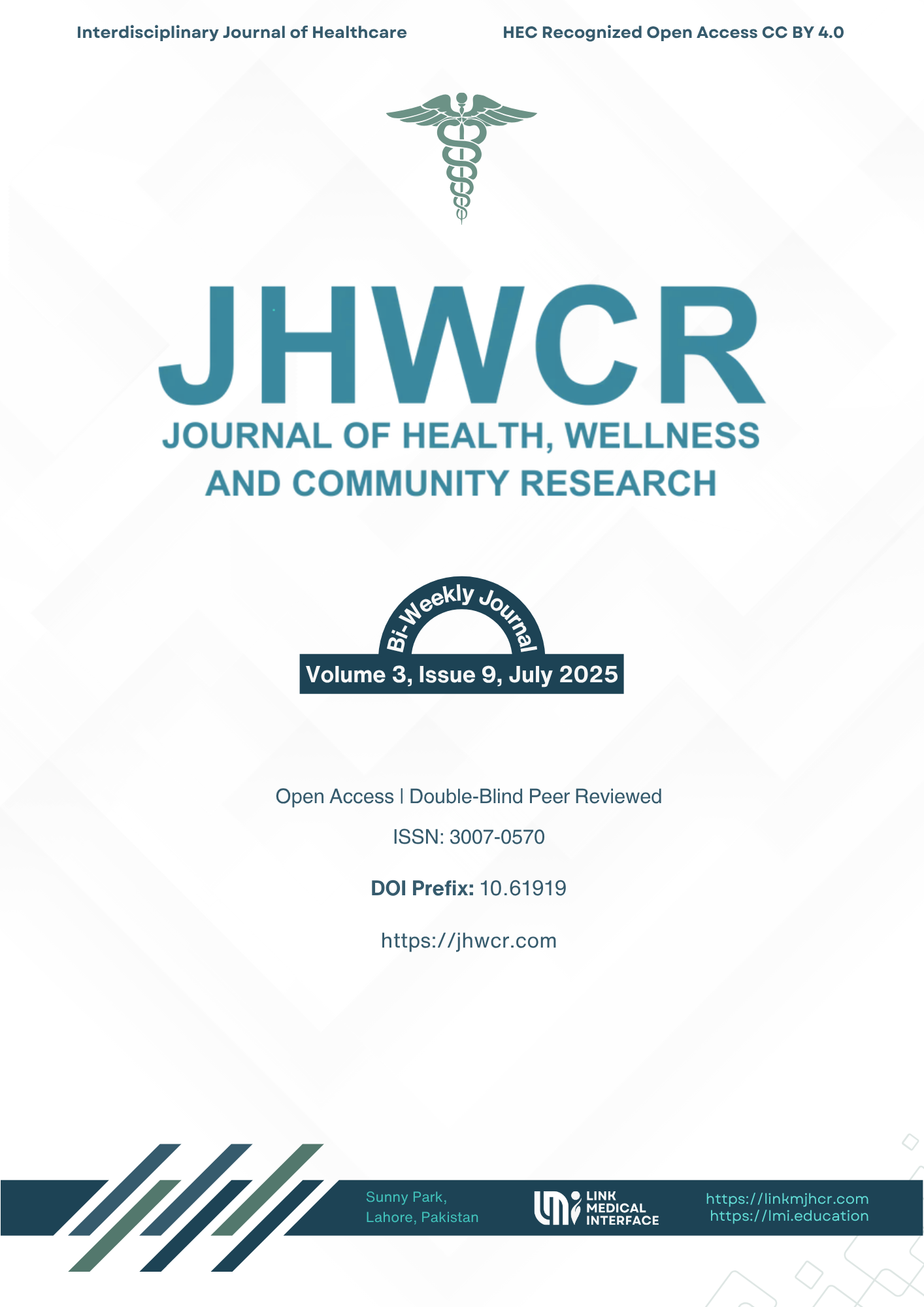Comparison of Pre-Linguistic Skills Among Male and Female Children with Autism Spectrum Disorder
DOI:
https://doi.org/10.61919/p0znrp12Keywords:
Autism spectrum disorder, prelinguistic skills, gender differences, early communication, CSBS DP, infancy, early interventionAbstract
Background: Autism spectrum disorder (ASD) is a neurodevelopmental condition characterized by impairments in social communication and restricted, repetitive behaviors. Prelinguistic skills, including eye contact, gestures, vocalizations, and symbolic behaviors, are foundational to later language and cognitive development. While some evidence suggests possible gender differences in communication abilities among individuals with ASD, data on early prelinguistic skills remain limited. Objective: To compare prelinguistic skills between male and female children with ASD aged 6 to 24 months using a standardized assessment tool. Methods: A comparative cross-sectional study was conducted in two autism-specialized schools in Lahore, Pakistan, from January to June 2024. Fifty-seven children (30 males, 27 females) diagnosed with ASD were assessed using the Communication and Symbolic Behavior Scales Developmental Profile (CSBS DP) Infant-Toddler Checklist. Communication, expressive speech, and symbolic composites were scored and classified as “concerns” or “no concerns.” Group differences were evaluated using Chi-square tests, with odds ratios (OR) and 95% confidence intervals (CI) reported. Results: Concerns were observed in 87.7% of children for communication, 82.5% for expressive speech, 80.7% for symbolic skills, and 91.2% overall. No statistically significant gender differences were found across domains (p = 0.125–0.436), and all 95% CIs for ORs crossed unity. Conclusion: Prelinguistic skill deficits are highly prevalent in young children with ASD, with no significant gender differences detected. Early, comprehensive, gender-neutral screening is recommended to guide timely intervention.
Downloads
Published
Issue
Section
License
Copyright (c) 2025 Muhammad Talha Afzal, Samia Rani, M. Sikandar Ghayas Khan, Sultan Badar Munir, Tayyaba Usman, Amreen Raheem, Zaineb Khan (Author)

This work is licensed under a Creative Commons Attribution 4.0 International License.


